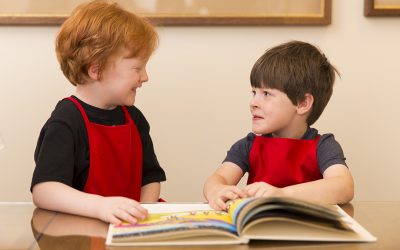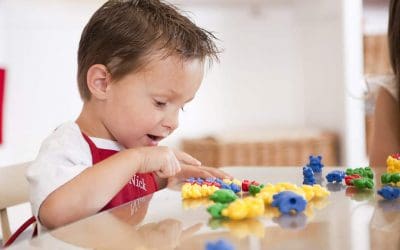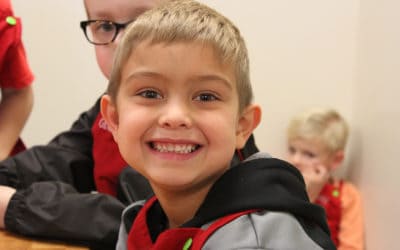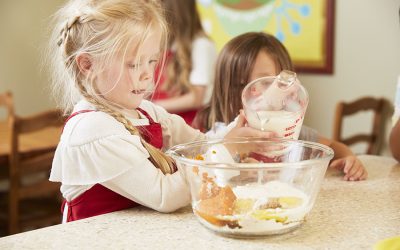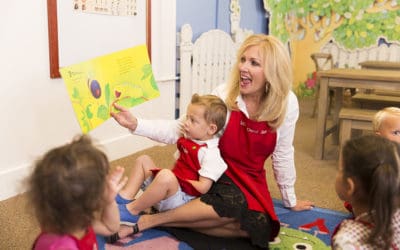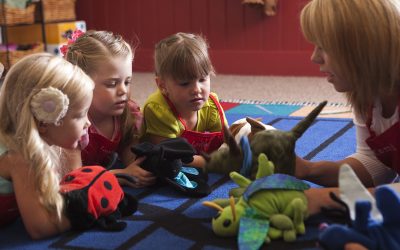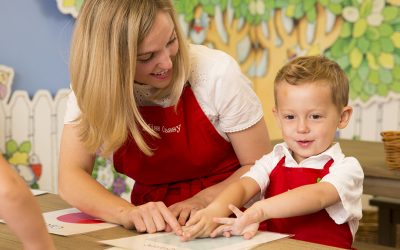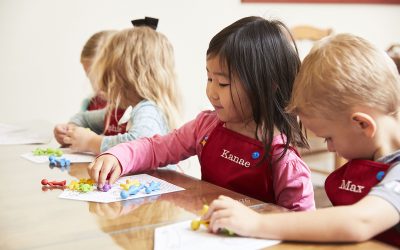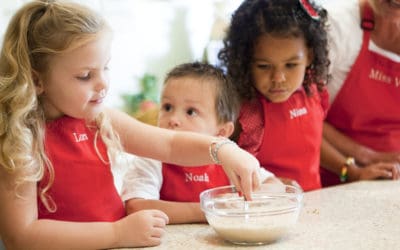At Kids Village, a private preschool and K-3 school in Orem, we deeply value patriotism and take pride in teaching our students to appreciate the sacrifices and contributions made by servicemen and women. Veterans Day provides a wonderful opportunity to introduce these young minds to the values of gratitude and respect for those who have protected our country. Through age-appropriate conversations and engaging activities, we aim to help our students understand the importance of honoring veterans in a way that is both fun and meaningful. Here are some ideas and activities to help parents and educators alike bring the spirit of Veterans Day into the lives of young children.
Veterans Day Activities for Young Children
Veterans Day is a special time to honor those who have served in the military, helping keep our country safe and strong. For preschool to second-grade kids, understanding military service and its importance can be challenging. Here are some fun, age-appropriate ways to help your little ones understand Veterans Day and show appreciation for the servicemen and women who protect our country. With simple explanations and engaging activities, you can introduce them to this meaningful holiday in a way that’s friendly and easy to grasp.
1. Explaining Veterans Day in Simple Terms
Kids learn best when things are kept simple. Start by introducing the concept of a “veteran” as a helper—someone who has worked to keep people safe. You might say, “A veteran is someone who helped protect our country,” or “They are special helpers like police officers or firefighters.” Avoid discussing complex ideas like war; instead, focus on the idea of service and bravery.
Visual aids can be helpful here! You could look through family photos, read a picture book about veterans, or show them a short, gentle video about military helpers. Great books to start with include Veterans: Heroes in Our Neighborhood by Valerie Pfundstein and The Poppy Lady by Barbara Walsh. They offer relatable stories that introduce the idea of Veterans Day in a friendly way.
2. Making Thank-You Cards for Veterans
Crafting thank-you cards is a hands-on way for kids to express their appreciation, and it’s fun too! Let them know that Veterans Day is a time to say, “Thank you” to people who have worked hard to keep everyone safe. Provide some ideas for what they could draw or write—maybe hearts, flags, or even a simple “Thank you for helping us!”
Once they’ve created their masterpieces, think about delivering or mailing these cards to a nearby veterans’ organization, VA center, or local veterans’ hospital. Some families even bring their cards to a local Veterans Day event. It’s a beautiful way to connect, and kids will feel proud seeing their kind gestures make a difference.
3. Host a Virtual Storytime with a Veteran
Kids are naturally curious about other people’s lives, and a short, simple story from a veteran can really make the holiday come to life. If you have a family member or friend who is a veteran, see if they’d be willing to share a story over a video call or in person, focusing on friendly tales of bravery and teamwork. Just a short talk about their job in the military and why they enjoyed it can go a long way to spark kids’ curiosity and respect.
You can also read a book together that highlights veterans’ roles. H is for Honor by Devin Scillian is a fantastic alphabet book that introduces military life in a way kids can understand.
4. Patriotic Crafts: Making American Flags and Poppies
Kids love creating things with their hands, so patriotic crafts are a perfect choice. You could make simple American flags from construction paper and crayons, or craft red poppies—the traditional symbol of remembrance—using tissue or construction paper. These are beautiful projects that can be proudly displayed around the house.
Explain that the flag represents our country, and poppies are a special flower we use to remember those who served. Kids will feel a sense of pride when they see their decorations around the home, and it reinforces the importance of honoring others.
5. Family Connections and Story Sharing
Encourage your kids to ask about veterans in your family or among family friends. If you have relatives who served, take some time to share stories, look at photos, or talk about why they served. It’s a simple way to create a personal connection to Veterans Day and helps your kids relate to the holiday in a real, tangible way.
If your family doesn’t have direct military connections, you can still talk about other helpers in the community—like police officers, teachers, and doctors. This helps kids understand that service comes in many forms and that showing gratitude is important.
6. Patriotic Songs and Rhymes
Singing is a fantastic way for little ones to learn, and patriotic songs are fun and engaging. Consider teaching a simple song like “This Land Is Your Land” or “You’re a Grand Old Flag.” Kids love to sing along, and these songs introduce a sense of pride in America in a friendly, age-appropriate way.
For added fun, consider a little marching parade around your home or yard, waving small flags and singing along. It’s a joyful way for them to feel involved in the day’s celebration!
7. Explore an Interactive Map
Young kids are often fascinated by maps, so this is a great time to explore where people across the country live and serve. Grab a U.S. map and explain that veterans have helped keep people safe all across the country. You could place stickers on the states where family members live or add stars to areas where your family might know someone who served.
8. Creating a Veterans Day Word Wall
Introduce a few Veterans Day words like “brave,” “service,” “country,” “flag,” and “honor.” Write them out on paper or sticky notes, and place them somewhere visible. Talk about what each word means in simple terms, like “brave” means “someone who is not afraid to help” and “service” means “helping others.”
Encourage your kids to use these words throughout the week, and see if they can use them in sentences or drawings. It’s a fun way to build vocabulary while also learning about the holiday.
9. A Moment of Reflection
Finally, end your Veterans Day activities with a quiet moment of reflection. Explain that sometimes we show our appreciation by taking a quiet moment to think about those who help others. Lead your child in a minute of silence, encouraging them to reflect on all the people who help protect others every day.
For young kids, sitting still for a minute might feel like a big ask, but even a few seconds helps them connect with the day’s purpose and teaches respect in a gentle way.
Final Thoughts
With these ideas, you can introduce Veterans Day in a way that helps your child learn about service, bravery, and appreciation. These activities help them understand that Veterans Day isn’t just another day on the calendar, but a chance to honor real people who have worked hard to protect our country. As you talk with your little ones, remember that it’s all about keeping things simple, interactive, and positive—showing them the value of gratitude in a way they’ll remember. Happy Veterans Day!
You may also be interested in...
4 Strategies for Teaching Children to Resolve Sibling Fights on Their Own
Teaching Children to Resolve Sibling Fights on Their Own Where there is communication, there are disagreements, disputes, and misunderstandings. This underlines the significance of teaching your children how to resolve conflicts effectively and independently. This...
Counting Bears – The Importance of Manipulatives in Early Childhood Math
At Kids Village, you may have seen that we use bear counters to help teach math to our Sweet Peas, Little Sprouts, and Tater Tots. While bear counters are cute and colorful, we love them for more than just their aesthetics. Hands-On Learning These bear counters are...
Teaching Children Gratitude
Gratitude is about more than an automatic "please" and "thank you" response when someone does something kind for you. Teaching children gratitude is about helping them learn to understand that in order to receive, someone else must give. It means when someone does...
Teaching Your Child to Cook: Age Appropriate Kitchen Skills
Cooking is not only a fun activity to do with your child; it’s also an important life skill for them to learn! You’ve probably already started letting your child help with things like stirring and pouring, but at what ages can you start adding additional skills?...
About Kids Village Monthly Values
At Kids Village, we believe that early childhood education encompasses not just the mind, but the heart and soul as well. Our goal is to raise the children in our school up so they have the confidence and mindsets to believe they can achieve anything they want in...
9 Tips for Becoming a More Playful Mom
The best way to help your child thrive is by spending time with them. By engaging with them, you stimulate their imagination, boost their confidence, and strengthen that connection that you both need. 9 Tips for Becoming a More Playful Mom For some of us, being...
Tips for Helping Your Child Love Reading
Reading is so important in your child’s development. Not only is it critical in language development, but it also helps build social skills, communication skills, stimulates creativity, sparks their imagination, improves focus, and introduces problem-solving skills....
How to Raise a Grateful Child
Gratitude is important for adults and children alike. Not only is it good for our bodies, but it also makes us happier and less susceptible to depression, makes us more resilient, and is good for society. For children, gratitude is an important lesson in their...
First Day of School Kids Village FAQs
To help you prepare for the first day, we’ve put together a list of frequently asked questions (and answers) to make your child’s first day of school at Kids Village as smooth as possible!
6 Ways to (Gently) Teach Your Child to be Mentally Strong
Teaching your child how to be mentally strong is about so much more than preventing tantrums. This practice helps increase your child's emotional intelligence, which is said by some researchers to have a large impact on their success later in life. It helps encourage...
25 Positive Affirmations to Say to Children
You've probably heard--or even practiced--the art of positive affirmations. At the simplest level, positive affirmations can help you feel good adobe yourself which can help your life feel like it's running more smoothly. We hear a lot about positive affirmations, but...
The Importance of Learning Names
Why does Kids Village embroider our students names on their red book bags and aprons? You may be surprised by the science behind it.


